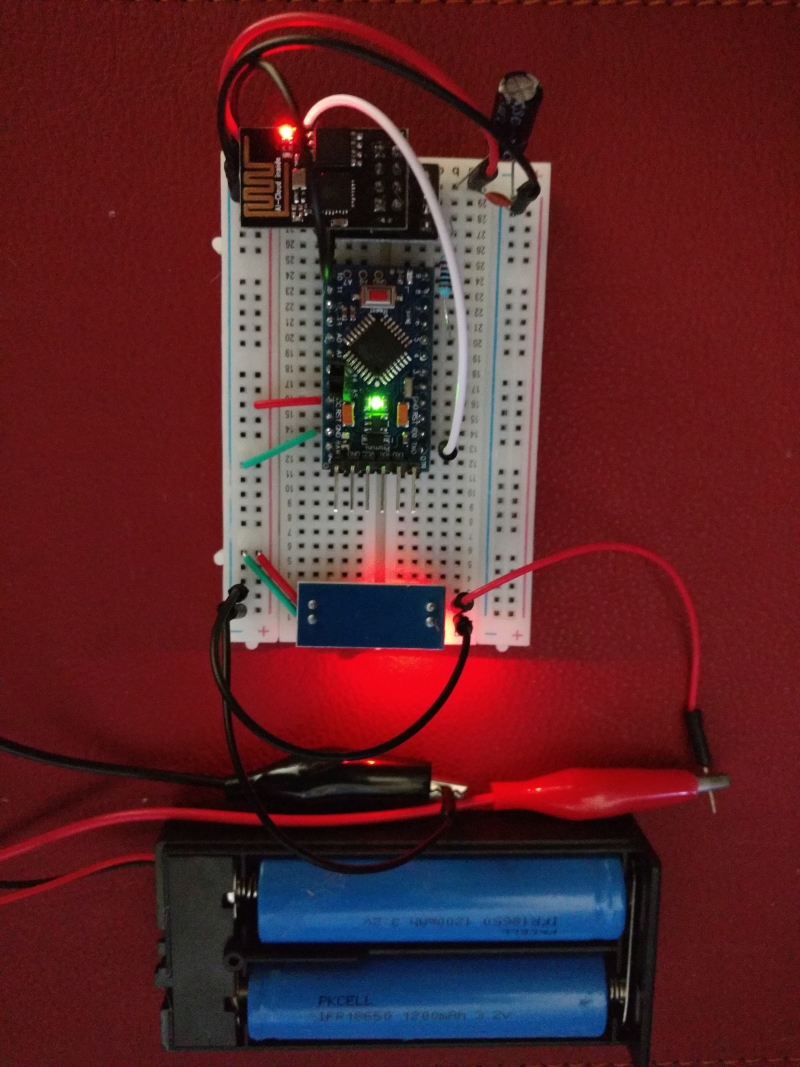Contents
Introduction
The Espressif ESP8266-01 module is known for the excessive load it can incur on a circuit. This is particularly true when the module boots up and connects to a WiFi network. This load easily exceeds what the Arduino Pro Mini can provide through its builtin voltage regulator. I destroyed my Arduino module because I connected the ESP-01 to the Pro Mini’s 3.3v output pin. What might have contributed to the destruction was, that I let the Pro Mini control the CH_PD pin of the ESP-01 in order to save power. As soon as the Pro Mini woke up from Deep Sleep mode, it pulled the ESP-01 CH_PD pin to HIGH through one of its digital pins, thus creating an out-of-spec load on the Pro Mini’s regulator, every 8 seconds. Well, it failed right from the beginning. The Pro Mini’s LEDs behaved erratic, probably because a significant voltage drop in the circuit setup. Voltage usually drops if something attempts to draw more current than is available, which is particularly true if both the ESP01 and Pro Mini are connected to the same battery.

Eventually, I came up with a long list of restrictions which hindered me of reaching my goal to run both Pro Mini and ESP-01 on batteries.
- The ESP-01’s peak load potentially exceeds 250 mA
- No Arduino internal voltage regulator can handle such a load
- If the regulator cannot supply enough current then the voltage drops
- Decoupling / bypass capacitors are not suited for applications which need a long (seconds) and high burst of power
- No single battery setup can supply and sustain 3.3v when the ESP-01 starts up
After days of research and testing, I spent some money to check out the most promising approach to solve the problem.
In the next chapter, I cover the use of external voltage regulators. Regulators always have an adverse effect on battery life, but what to do? The whole topic becomes more interesting when we talk about different battery types and setups. Stay tuned.